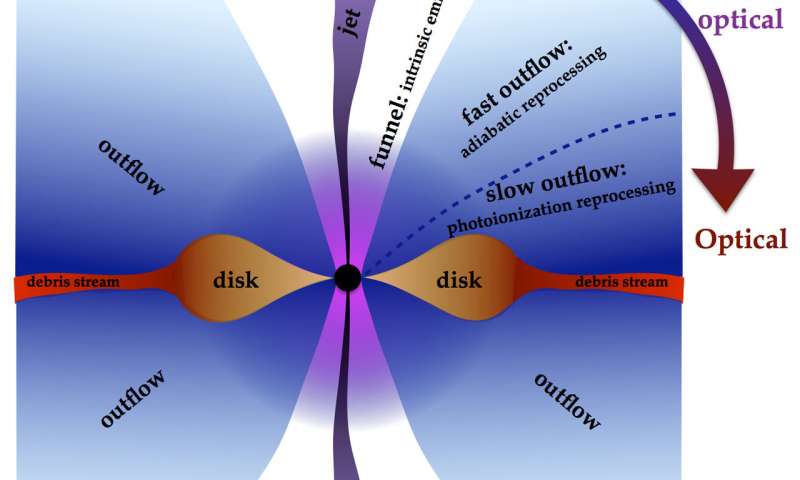At https://phys.org/print446798161.html … modelling works well when applied to for example, geology (rates of erosion etc) but how reliable is it when applied to the theoretical concepts such as black holes? We are informed that a star that approaches too close to a black hole will be torn apart and gobbled up in a violent cataclysm known as a tidal disruption event. It produces a bright flare of radiation – picked up in space telescopes. A study published in Astrophysical Journal Letters presents a theoretical perspective on this theory – using modelling techniques. In most galaxies the central black hole is dormant – and unseen. Hence the title of a 'black' hole applied to the theoretical object. It is thought it can be seen when it bursts into life – after a feeding frenzy. This is also thought to occur when a star or a cloud of gas comes too close to the quiet black hole. The assumption here is that the star being eaten by the black hole causes radiation to be emitted. The radiation is what is observed by scientists – very often as a bright burst of light and energy. However, scientists have a problem in that some black holes emit mostly x-rays whilst ofthers emit mostly visible and ultra violet light. The new study seeks to explain this and suggests the difference is due to the angle at which the black hole is being observed. From one angle it is exposed and from the other it is partially obscured.

